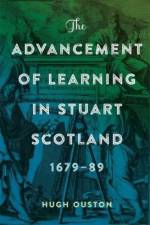- Records of the Hundred Years War, Edited and Translated in Honour of Anne Curry
av Rémy Ambühl
2 407
Insights from English and French writers on one of the most significant armed conflicts of the Middle Ages Documentary sources for the Hundred Years War are many and varied, yet given the number that exist, comparatively few have been published, and even fewer translated. The contributors to this volume, celebrating the work of Professor Anne Curry, provide a wide selection of these sources, edited and translated, and accompanied with detailed analysis and commentaries, by experts in the field. They include contracts, inventories, letters of grace, depositions and wills, and shed new light across a range of themes, from recruitment, violence, ransoms and peace, to gunpowder, shipping, dress, and stray horses. An introductory essay gives a wider perspective on the sources for the Hundred Years War, taking a comparative view from both sides of the Channel.












